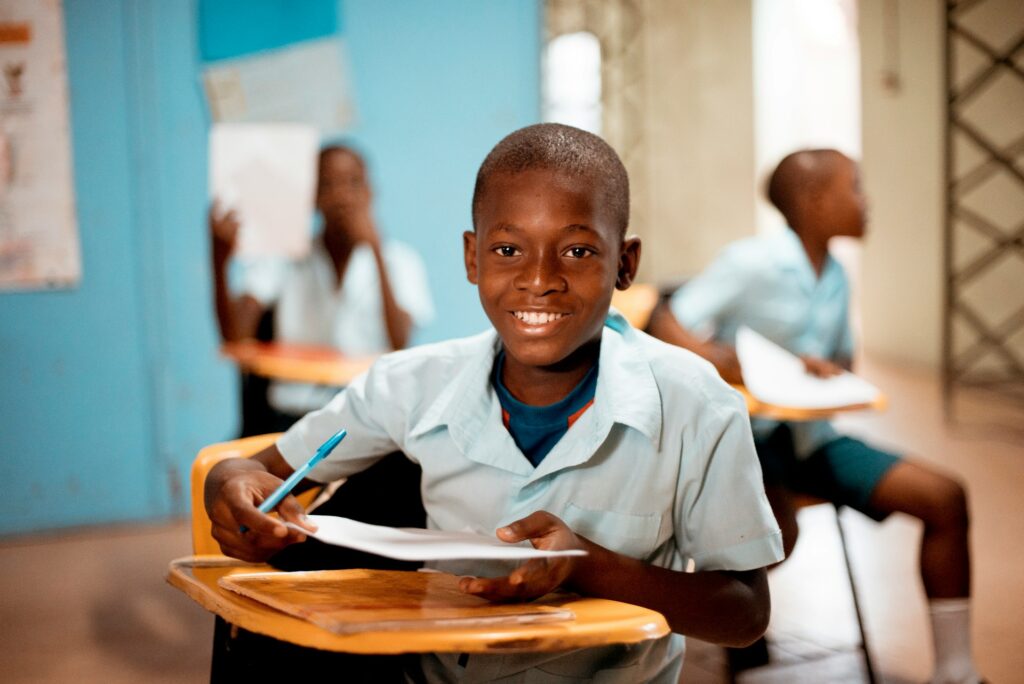
Cost of education in Malawi
 Hello everyone, today we will take a deeper look into the messy and often overpriced education system in Malawi. If any of you are students past or present, you very well know what I mean. Education is not cheap and in all honesty, it has never been cheap, even in the days of Kamuzu, education was only “cheap” because the population was less than 10 million when he left the presidency, in the 1970’s for example, Malawi’s population was less than 4.5 million people, now in the mid 2020’s we are over 20 million people with basically the same resources and even more foreign debt. Anyway, please read on and let us know in the comments what you think about the cost of education in Malawi
Hello everyone, today we will take a deeper look into the messy and often overpriced education system in Malawi. If any of you are students past or present, you very well know what I mean. Education is not cheap and in all honesty, it has never been cheap, even in the days of Kamuzu, education was only “cheap” because the population was less than 10 million when he left the presidency, in the 1970’s for example, Malawi’s population was less than 4.5 million people, now in the mid 2020’s we are over 20 million people with basically the same resources and even more foreign debt. Anyway, please read on and let us know in the comments what you think about the cost of education in Malawi
Education under Kamuzu Banda Dictatorship
The landscape of higher education fees policy in Malawi has seen significant changes since the period before 1994, transitioning from a virtually no tuition fee policy to the introduction of tuition fees and loan systems. Most recently, public discourse has centered around adjustments in tuition fees in response to the operational costs of universities. In July 2023, a notable increase in fees was defended by Leader of the House in Parliament, Richard Chimwendo Banda. He explained that the operational costs for universities are high, with the government spending about K4.5 million to train each student. The increase was from K420,000 to K600,000 for generic students at the University of Malawi and Lilongwe University of Agriculture (LUANAR), a decision driven by economic pressures despite opposition from various parliamentary members concerned about the economic challenges faced by many households. Chimwendo highlighted that thousands of students access government loans for their fees, and the fee increase was mitigated by the intervention of President Lazarus Chakwera.
The educational landscape is further characterized by engagement and analysis of the national education budget, with a focus on increasing accountability and quality education outcomes. The Kuyenda Collective, in partnership with other organizations, facilitated a parliamentary engagement meeting to discuss the 2023-2024 draft national education budget. This meeting aimed to enable youth participation in policy dialogue, highlighting the government’s budgetary constraints and the need for strategic allocation of limited resources to priority areas. The analysis revealed concerns such as budget deficits, stalled construction projects due to reduced funding, and significant under-disbursement of resources for education infrastructure and teacher salaries.
In terms of university admissions, the selection results for the 2022/2023 academic year were announced by the Ministry of Education, coordinated by the National Council for Higher Education (NCHE). From 19,760 applications received, 8,552 students were selected across various public universities, representing a selection rate of 46.3%. This data reflects the competitive nature of university admissions in Malawi, with detailed statistics provided for the gender distribution and numbers of selected students across different universities.
These developments indicate a continuing evolution in Malawi’s higher education sector, marked by policy adjustments to accommodate economic realities, efforts towards inclusive dialogue on education financing, and the selective admission process into public universities. The increased fees underscore the financial challenges faced by higher education institutions in Malawi, while the engagement in budget analysis and selection statistics highlight an ongoing commitment to improve education access and quality amid economic constraints.

Education after Kamuzu Banda
Malawi government realized that this arrangement was not fair to all local Malawian students, and it was a recipe for disaffection amongst students and created unfortunate impression that some students were more favored by government than others. In order to have uniformity of tuition fees for students pursuing similar programs, government abolished the selection of government sponsored and self-sponsored students. This therefore meant that all undergraduate students fees was harmonized in public universities, hence leading a fees hike of above 200 percent on those students who used to be on government sponsorship. The announcement was justified as a requirement to ensure efficiency and quality higher education services in the universities. According to the announcement, the capabilities of government to provide its citizens with either heavily subsidized or virtually free higher education had increasingly become less tenable in the face of a limited resource envelope and other competing priorities all over the world. The government therefore had to make a choice on whether to have an education system which was under resourced and uncompetitive or very well resourced through the co-sharing of costs between government and individual beneficiaries. In this respect, Government of Malawi chose quality education which meant cost sharing of education expenses with the students, but while at the same time ensuring that the neediest students were not left behind in their quest for quality education. Unfortunately, the introduction of the high cost of tuition has left a big gap between higher education and development.
Impact on poor students
There are many reactions on the justification of fees hikes in most of the universities especially that most of the student services such as accommodation were stripped off. A group of scholars argue that high tuition fees increases inequality in the country. Dearden, Fitzsimons & Wyness (2011) argue that higher tuition fees deters youths from lower-income backgrounds from going to university hence widening the gap in university participation between the rich and poor.
The group of students put at a disadvantage in their academic pursuance are the poor. An observation by Clery (2015) that high fees make some students to overwork to fundraise for their fees hence affecting their grades as well as their general health has been affirmed in Nigerian universities where institutions experienced irregular attendance and absenteeism by students since they used some of their time to do part time work to fundraise for their fees hence resulting in their low performance (Okoli, 2015).The evidence is very true to that of most of Malawi’s university students. The report by Okoli also put limelight to the high fees situation in Nigeria that made many students to stay in unsecure locations to save money fuelling cases to students, especially girls, being raped, robbed and killed in those cheap accommodations areas. All these ultimately lead to low performance of the economically disadvantaged students. However, the Malawi vision 2020 suggests various solutions: increasing access, quality and equity to higher education; increasing number of skilled people; improving performance; and developing effective and efficient management education system, among others (GoM, 2008). To this end, Article 26 of the United Nations (1948), proclaims that “higher education shall be equally accessible to all on the basis of merit” (p.5). Similarly, Article 13 of the United Nations (1966) stipulates that “higher education shall be made equally accessible to all, on the basis of capacity, by every appropriate means, in particular by the progressive introduction of free education” (p.6).
The Malawi Growth Development Strategy II (MGDS II) recognizes the crucial role of higher education as a key driver of competitiveness and growth. The Ministry of Education, Science and Technology (MoEST) must critically assess the performance of the higher education system with a view to exploring policy options that increase equitable access and provide quality education relevant to the labor market in a financially sustainable manner.
Education demand continues to grow
Demand for higher education has grown in most countries globally. Altbach and Salmi (2011) reports that demand for higher education has increased evidenced by the increase in enrolments 2000 from 100 million to well over 150 million worldwide. Shattock (2010) reports that the percentages of 18-23 year olds in United Kingdom’s higher education increased from 14 percent in 1980 to 43 percent in 2006. Despite the efforts by many governments around the world to applying diverse strategies to expand higher education capacity, the demand could continue growing out of proportion unless controlled. One of the measures of controlling the demand could be raising tuition fees (Johnstone, 2003). Although the hike in fees was justified as a method to control enrolment into public universities and a way to open up opportunity for enrollment into private institutions, the public universities did not improve their infrastructure, quality of education and other services. The fees hike implementation strategy was not good. It should have been a gradual process with small percentages every year so that people do not feel the pain of hiking fees by more than 300% in a single year. The high fees hike has negative impacts such as the recorded high rates of dropouts, widened the gap between the rich and the poor and needy students which have been given loans since they are likely to be tied in huge debt just after graduation hence not enjoying university and life to the fullest.
What can be done to reduce education costs?
The National Council for Higher Education in Malawi and Ministry of Education are the only reliable instruments that can develop a national qualifications framework, in reference to international standards, to guide and regulate quality of university programs.
Overall, the government and development partners should prioritize investing in the young generation to advance to higher education in order to reap a significant demographic dividend and foster development but they can do more to help reduce the costs and improve the quality of our education system:
-
Government and Institutions:
- Increased Public Funding: Allocate more resources from the Malawi national budget to public schools and universities to reduce dependence on tuition fees.
- Open Educational Resources: Encourage the use of freely available digital textbooks and learning materials.
- Technology Investments: Utilize technology for administrative tasks, online learning options, and improved resource sharing.
-
Partnerships:
- Scholarships and Grants: Collaborate with private donors and corporations to offer need and merit-based scholarships.
- Work as you learn scheme: Develop programs that combine academics with paid work experience, allowing students to earn while they learn.
Poll
You might also be interested in our guide on the best universities in Malawi and the social & economic inequalities in Malawi today.
- Social & Economic Inequalities in Malawi Today - November 16, 2021
- Cost of education in Malawi - June 11, 2021
- The Quest for a Pragmatic Economic Management Framework in Malawi - February 10, 2021


